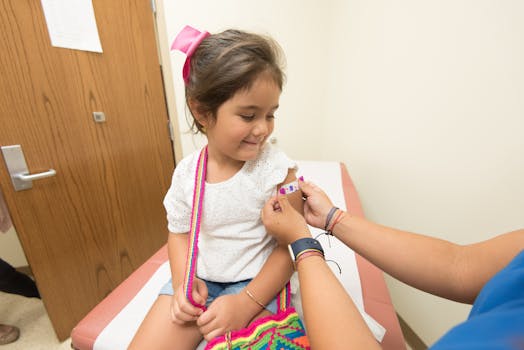The Importance of HPV Vaccination to Prevent Cervical Cancer
Cervical cancer remains one of the leading causes of cancer-related deaths among women worldwide. However, the advent of the Human Papillomavirus (HPV) vaccine has revolutionized the prevention of this disease. Understanding the significance of HPV vaccination is crucial for public health, as it not only protects individuals but also contributes to the broader goal of reducing cervical cancer incidence globally.
Understanding HPV and Its Link to Cervical Cancer
Human Papillomavirus (HPV) is a group of more than 200 related viruses, of which at least 14 are known to cause cervical cancer. HPV is primarily transmitted through sexual contact, and most sexually active individuals will contract the virus at some point in their lives. While many HPV infections resolve on their own, persistent infections with high-risk HPV types can lead to the development of cervical cancer.
According to the World Health Organization (WHO), HPV is responsible for approximately 90% of cervical cancer cases. This statistic underscores the importance of preventive measures, particularly vaccination, in combating this disease.
The Role of HPV Vaccination
The HPV vaccine is designed to protect against the most common cancer-causing strains of the virus, particularly HPV types 16 and 18. Vaccination can significantly reduce the risk of developing cervical cancer and other HPV-related diseases, such as anal and oropharyngeal cancers.
- Types of HPV Vaccines: There are three main types of HPV vaccines available: Gardasil, Gardasil 9, and Cervarix. Gardasil and Gardasil 9 protect against HPV types 6, 11, 16, and 18, while Cervarix protects against types 16 and 18.
- Vaccination Schedule: The vaccine is typically administered in a series of two or three doses, depending on the age of the recipient. It is recommended for preteens aged 11 to 12, but can be given as early as 9 years old and up to age 26 for those who missed the earlier vaccination.
Statistics Highlighting the Impact of HPV Vaccination
Numerous studies have demonstrated the effectiveness of HPV vaccination in reducing the incidence of cervical cancer. For instance:
- A study published in the journal JAMA Oncology found that HPV vaccination led to a 65% reduction in cervical cancer rates among vaccinated women.
- The Centers for Disease Control and Prevention (CDC) reported that HPV vaccination has resulted in a 71% decrease in HPV infections among teenage girls in the United States since the vaccine was introduced in 2006.
- In Australia, where a national HPV vaccination program was implemented, there has been a dramatic decline in cervical cancer rates, with a reported 50% reduction in cases among women under 30.
Addressing Common Misconceptions
Despite the clear benefits of HPV vaccination, several misconceptions persist, which can hinder vaccination efforts:
- Myth: The vaccine is only for sexually active individuals. Fact: The vaccine is most effective when given before the onset of sexual activity, making it crucial for preteens.
- Myth: HPV vaccination promotes promiscuity. Fact: Research shows no evidence that vaccination influences sexual behavior.
- Myth: HPV vaccination guarantees complete protection against cervical cancer. Fact: While the vaccine significantly reduces risk, regular cervical screening is still necessary.
Global Efforts and Future Directions
Global health organizations are working tirelessly to increase HPV vaccination rates. Initiatives include:
- Public awareness campaigns to educate communities about the benefits of vaccination.
- Efforts to make the vaccine more accessible in low- and middle-income countries.
- Integration of HPV vaccination into routine immunization schedules.
These efforts are crucial in achieving the WHO’s goal of eliminating cervical cancer as a public health problem by 2030.
Conclusion
The HPV vaccine is a powerful tool in the fight against cervical cancer. By understanding the importance of vaccination, addressing misconceptions, and supporting global vaccination efforts, we can significantly reduce the incidence of this preventable disease. As we move forward, it is essential to continue advocating for HPV vaccination and regular cervical screening to protect future generations from the burden of cervical cancer.
